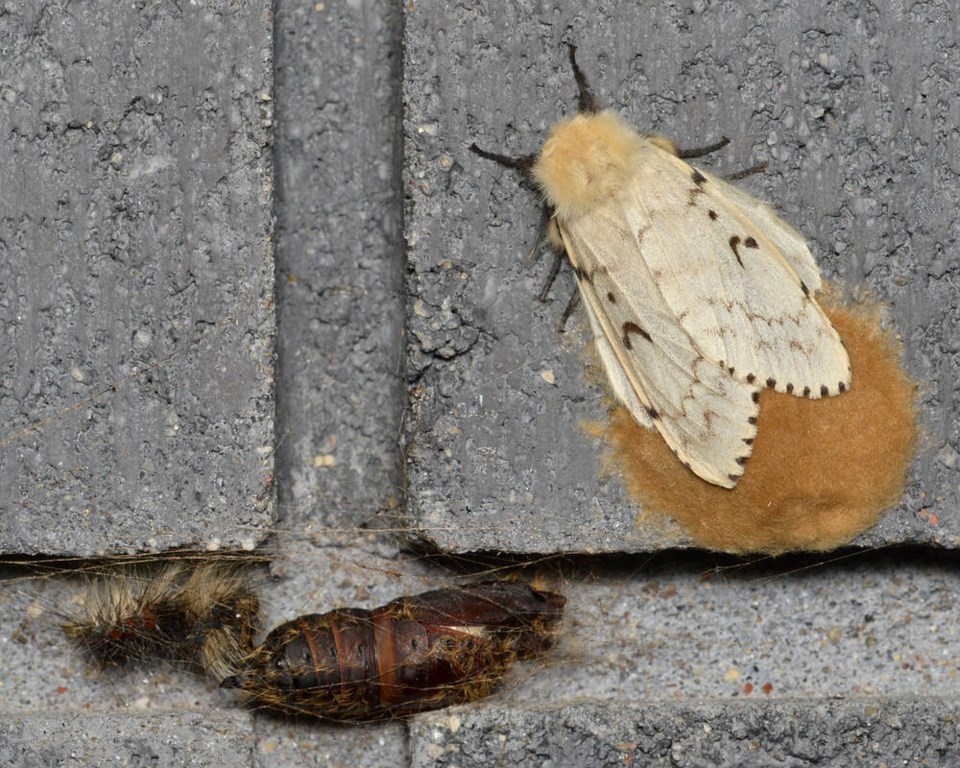The B.C. government will conduct aerial spray treatments and one ground treatment in six specific Lower Mainland locations this spring – including Burnaby.
These treatments will prevent lymantria moths, formerly known as gypsy moths, from becoming established and to minimize the risk they pose to forests, farms, orchards and urban trees, says a news release.
Approval was received by the Ministry of Forests to amend its existing pesticide use permit that was issued in March 2021 for lymantria moths.
The planned 2022 treatment areas in the Lower Mainland are:
* Burnaby (193 hectares near Brentwood Mall);
* Surrey (108 hectares in the Grandview Heights area);
* Mission (341 hectares);
* Chilliwack (49 hectares along Chilliwack River Road);
* Langley (362 hectares); and
* Coquitlam ground spray (41 hectares, centred on United Boulevard).
These planned treatment locations are in addition to three areas on Vancouver Island. Last year's monitoring program trapped an above-average number of male moths on the Lower Mainland, indicating that the moths could become established in those locations if the proposed pesticide spraying is not done.
Trapping and monitoring results from 2021 show clear evidence that lymantria moth populations have increased dramatically in the areas slated for treatment this spring, likely resulting from outbreaks in Ontario and Quebec during the past three years. Egg masses are commonly transported to B.C. on recreational vehicles and outdoor household articles originating from affected areas outside of the province.
If left untreated, the invasive lymantria moths could spread to other areas of British Columbia. Trees such as Garry oak, arbutus, red alder, aspen, cottonwood, maple, orchard fruit trees, nut trees and many species of urban ornamental trees would be affected, as well as food crops such as apples, blueberries and other fruits.
To control the moths, the ministry is planning as many as four applications of Foray 48B in the specified areas beginning in early May and ending in early June 2022. Organic farms in the spray area treated with Foray 48B will not lose their organic certification. The active ingredient Bacillus thuringiensis var kurstaki (Btk) is naturally present in urban, agricultural and forest soils throughout the province. It affects only the stomachs of caterpillars (e.g., lymantria moth caterpillars) and is specific to their digestive systems.
Btk has been approved for the control of lymantria moth larvae in Canada since 1961. It does not harm humans, mammals, birds, fish, plants, reptiles, amphibians, bees or other insects. It affects only the stomachs of caterpillars and is specific to their digestive systems.
Quick Facts:
* The lymantria moth is an introduced pest. The caterpillars feed on tree leaves.
* In recent years, large lymantria moth populations have defoliated sections of forests and residential areas in Ontario and the eastern United States.
* These moths are unintentionally brought to B.C. on vehicles and equipment from eastern North America.
* Infested locations are often subject to agriculture and transportation quarantines, as well as additional procedures that may include vehicle checks, product certification and increased pesticide use.



